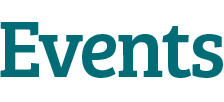Leading scientists from academia, the FDA and industry will present and lead discussion on the current status of the rapidly emerging field of drug transporters, the clinical relevance of drug uptake and efflux transporters, and the application of in vitro and in vivo tools to drug discovery and development. Participants will be encouraged to join discussions on best practices and future directions. The workshop will culminate in the generation of a White Paper.
Learning Objectives:
At the conclusion of this meeting, participants should be able to:
• Describe the clinical significance of the transporters in drug exposure, toxicity and drug–drug interactions.
• Discuss the characteristics of drugs that determine whether a transporter may be important.
• Evaluate the role of a transporters in clinical studies.
• Identify examples of clinically relevant effects on transport activity as evidenced by changes in pharmacokinetics, drug response and/or toxicity.
• Compare relevant model systems for studying transporters, including utility (how the model is used, what data is collected, how it is analyzed), requirements, advantages, disadvantages, current questions, issues and limitations of the model.
• Assess which model(s) would be most appropriate to use to answer specific questions.
• Identify gaps in knowledge regarding specific models or areas where new tools/models are really needed.
Learning Objectives:
At the conclusion of this meeting, participants should be able to:
• Describe the clinical significance of the transporters in drug exposure, toxicity and drug–drug interactions.
• Discuss the characteristics of drugs that determine whether a transporter may be important.
• Evaluate the role of a transporters in clinical studies.
• Identify examples of clinically relevant effects on transport activity as evidenced by changes in pharmacokinetics, drug response and/or toxicity.
• Compare relevant model systems for studying transporters, including utility (how the model is used, what data is collected, how it is analyzed), requirements, advantages, disadvantages, current questions, issues and limitations of the model.
• Assess which model(s) would be most appropriate to use to answer specific questions.
• Identify gaps in knowledge regarding specific models or areas where new tools/models are really needed.





